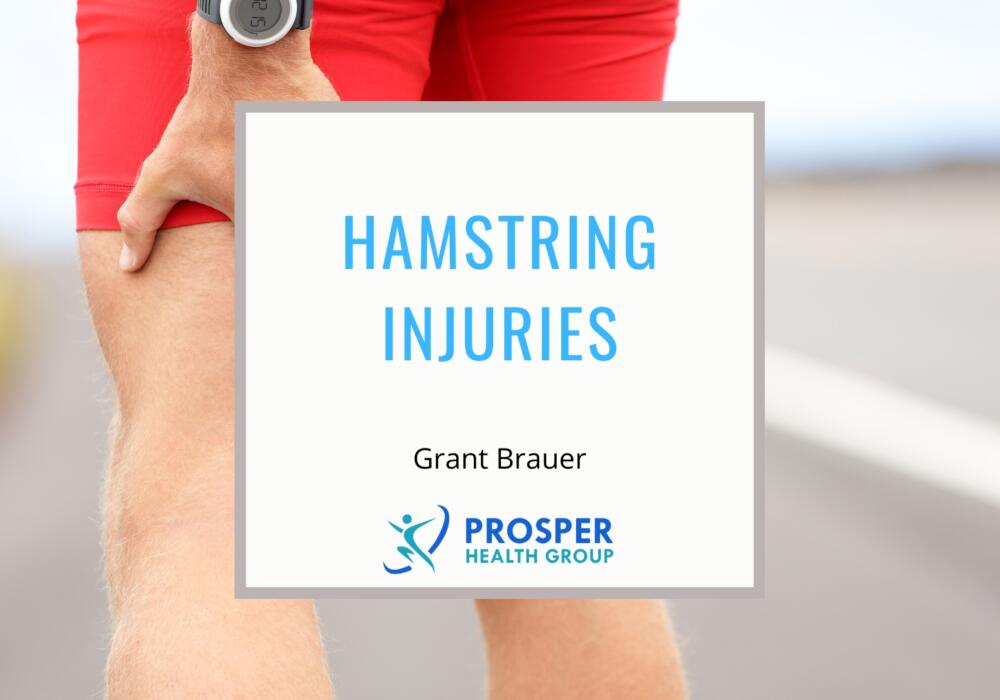With the football and netball seasons fast approaching our attention will also turn to those injuries that are synonymous with those sports. Despite the vast amount of research undertaken in the pursuit of reducing the prevalence of hamstring strains, they are still one of the most common injuries in ball sports such as netball and football and result in lost game time for athletes and their teams.
In this blog we’re going to look at these injuries in a little more detail and talk about how Physiotherapy can help.
What are the hamstrings and what is their function?
The hamstrings muscles are actually a group of muscles that are situated at the back of the thigh. They run the entire length of the thigh from the base of the pelvis to the back of the knee.
Because of their location, the hamstrings act to bend the knee and also to extend the hip take the thigh backwards. This action where the muscle contracts and shortens is referred to as a concentric contraction. In running or sporting activity however, they are required to control or slow down the movement of the thigh and the knee in the opposite direction.
For example, in sprinting or kicking they work to slow down and then stop the forward momentum of the leg. When bending over to pick up a ground ball the hamstrings muscles assist in lowering the athlete’s bodyweight down to the ground so that the hands can reach the ball. This action of the muscle is called an eccentric contraction.
Muscles work much harder when asked to work eccentrically than concentrically which goes some way to explaining why athletes involved in high paced, team ball sports such as football or netball are likely to injure their hamstrings. Footballers have the additional stress of kicking load on their hamstrings as well as sprinting and reaching down to the ground.
What exactly is a hamstring strain?
A hamstring strain is an injury to a part of this group of muscles. The force of the activity becomes too great for the muscle to manage which leads to separation or disruption of muscle and connective tissues fibres. This in turn leads to acute bleeding and inflammation, pain and a loss of function of the muscle. The injured athlete will often reach for the back of their thigh and find that they are unable to run, either at full speed or even at all.
What can I do to help myself if I injure my hamstring?
Managing the pain and inflammation in the hours and few days post hamstring injury is really important. The quicker an athlete can get on top of these two things the quicker they can start the process of rehabilitation with their Physiotherapist.
Some simple methods of reducing swelling and inflammation are:
Do’s
- Rest – Stop the activity that caused your injury
- Ice – On the injury site for approximately 20 minutes every 2 hours for the first 48-72 hours
- Compression – Such as a compression bandage or compression tubing
- Elevation – Resting with the injured limb above the level of the heart will limit unnecessary bleeding
- Referral – Book in to see your Physiotherapist as soon as possible for a thorough assessment and to develop a plan to help you return to sport safely and prevent recurrence of the injury.
Do not do’s
While you are doing these things it’s important to avoid the following things:
- Heat – Adding heat to the site of the injury will likely make it bleed more and prolong the acute phase of your recovery.
- Alcohol – Alcohol is what is known as a vasodilator, which means that it opens up the blood vessels which again will lead to more unnecessary bleeding.
- Running/exercise – Too much unnecessary movement once again promotes blood flow and therefore unnecessary bleeding (and yes, dancing at a nightclub the night after a game counts!).
- Massage – Anything more than a very gentle massage to the injured muscle runs the risk of promoting more acute damage and blood flow.
How does physiotherapy help with recovery from hamstrings injury?
Physiotherapists are experts in assessing, diagnosing and treating all soft tissue injuries. Our Physiotherapist at the Colac clinic has over a decade of experience dealing with soft tissue injuries, including hamstring strains, that are caused by local athletes playing sport.
Assessment and diagnosis
It’s important to properly assess and diagnose the location and the severity of hamstring strains in order to provide an accurate time frame for a return to play and also to ensure that the right exercises and advice are provided at the right times.
Treatment
- Massage – After the acute phase of the injury has passed, manual therapy including massage becomes an effective option to promote healing of the tissue.
- Taping – Applying tape to the skin over the injured muscle has been shown to be an effective method in encouraging muscle re-activation and engagement post injury.
- Exercise prescription – A key element in the recovery and performance of any soft tissue injury recovery is to recondition the muscle to a point where it will cope with the demands of the activity. Strength of the hamstrings muscle group is a key element in not only injury recovery but also injury prevention.
- Graduated return to activity/return to sport – Building and then crossing the bridge from rehabilitation to a safe return to sport can be tricky. Our Physiotherapist has vast experience in helping local athletes navigate this transition with confidence with a focus not only on recovery but also performance on the field.
Don’t let hamstring injuries prevent you from achieving your movement or sporting goals. Make an appointment with our experienced, local Physiotherapist, Grant Brauer by contacting us at Prosper Health Group Colac on (03) 5290 5238. Alternatively you can book online.
